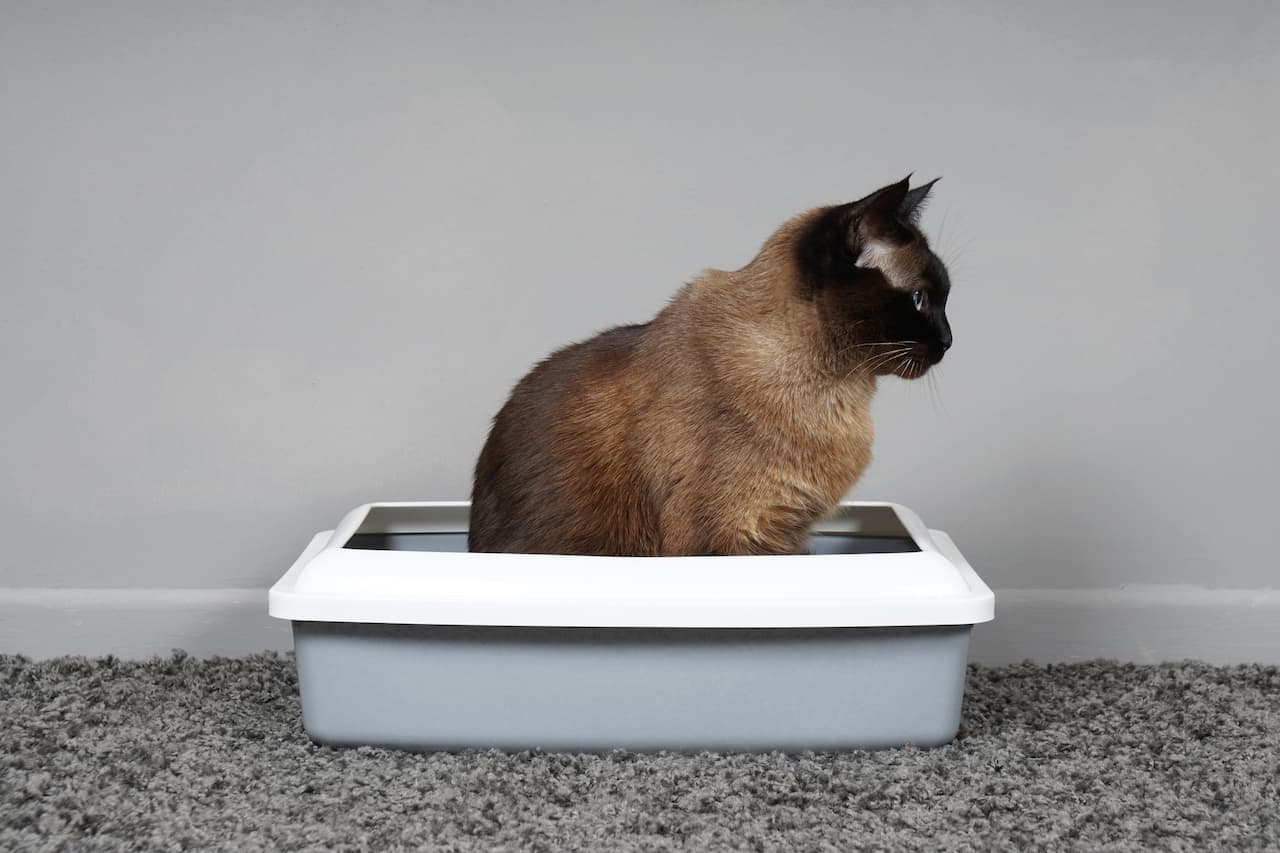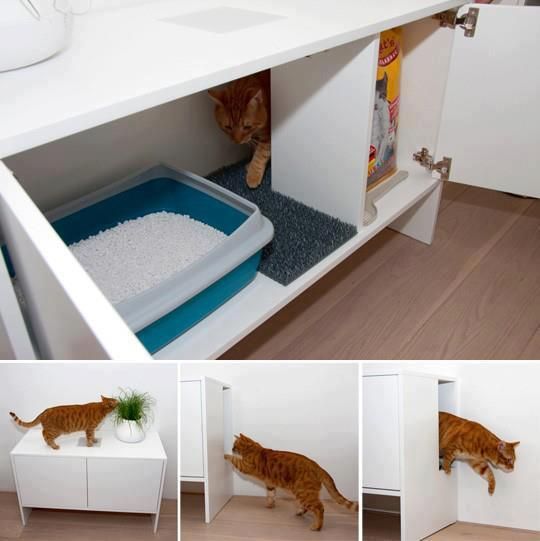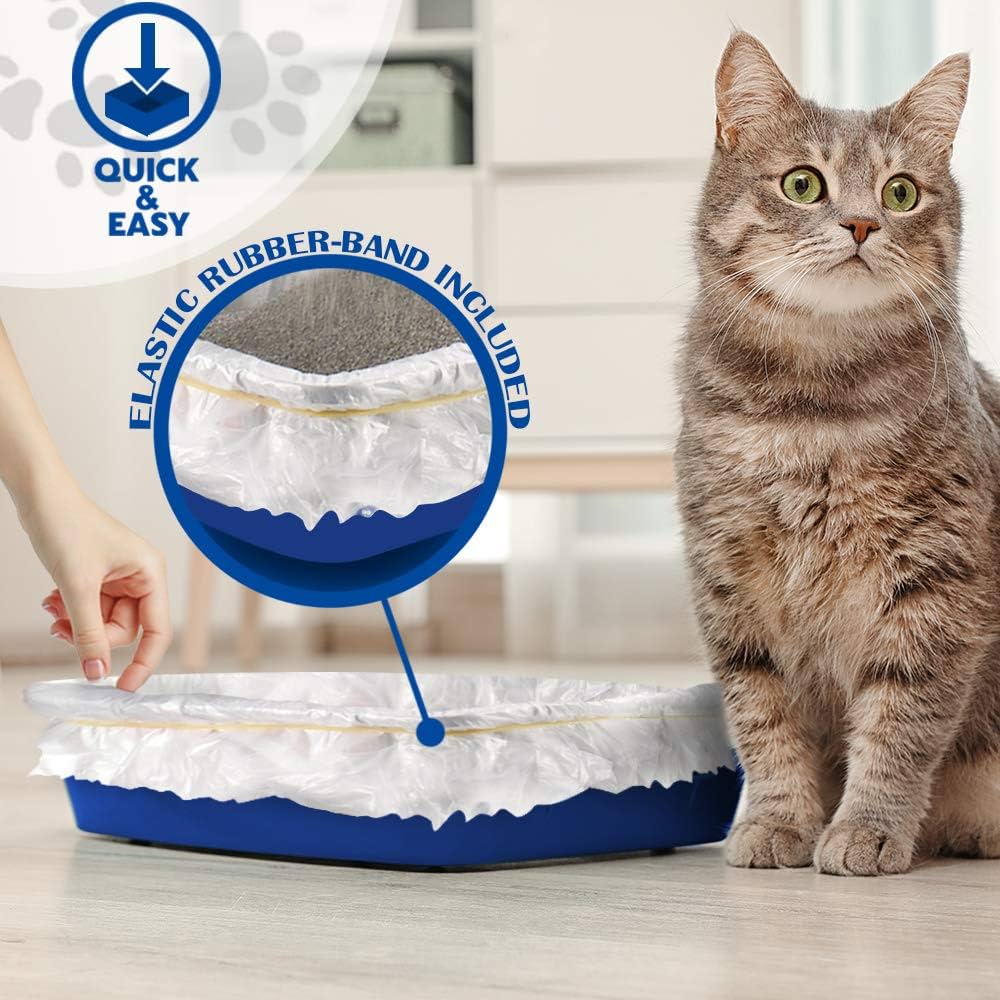No one likes cleaning their cat’s litter box, but the truth is that it’s an important part of being a responsible parent. A well-maintained litter box provides a comfortable, hygienic environment for your furry friend, resulting in fewer accidents and a happier cat-human relationship.
If you think that the litter box in the corner smells bad because you are too lazy to clean it, then your cat is bothered by the strong, acidic smell of a dirty litter box. Keeping your cat’s litter box clean can go a long way toward preventing common health problems such as urinary tract infections, ammonia-related respiratory irritation, and the spread of salmonella in your home.
Taking the time to maintain your cat’s litter box is a win-win for both humans and pets, but even the most doting cat owners may not know the best techniques and habits to adopt to keep their litter boxes as clean as possible. For example, according to experts, cat litter should be scooped out daily and completely replaced once a month, or twice a month in multi-cat households. Also, don’t forget to wipe down your bins and remove any leftover rubbish.
In This Article
How to clean the cat litter box?
Step1. Empty the litter box
The first step to getting that pristine litter box is to empty it completely. Consider putting on your face mask and gloves to do this part, as feline waste is acidic, may carry parasites and illnesses, and, yes, smells awful. The more protection you have against accidental exposure to your cat’s urine and feces, the better.
Step2. Take litter box outside
Take the entire litter box outside and empty its contents directly into a trash can. Be sure to dump it into your waste receptacle slowly to prevent a kickback effect of bacteria-saturated dust, and if there are any lingering clumps of litter, it’s easy to scrape them off with a broom directly into the bin.
A full cat box may be heavy and unwieldy, but it’s important to only empty it outside to ensure unwanted odors and dust don’t escape into your home.
Step3. Clean the litter box
Pour a few inches of hot water into the empty litter box and let it soak for a few minutes. Stirring in some unscented dish soap will help to loosen any lingering litter or waste from the box, making it much easier to scour away any problem spots with a scrub brush, sponge, or paper towels. Be sure to clean all surfaces of the cat box, including its exterior sides and bottom, with soap and water to prevent the spread of harmful bacteria in your home.
Step4. Use right cleaning product
Feel free to substitute dish soap with your preferred mild, scent-free, and non-toxic cleaning product. You may be surprised at how important an unscented cleaner is, but as mentioned earlier, house cats have a much sharper sense of smell than we do. So even a gentle citrus or pine scent could be overwhelming for your kitty, and may convince them to use places other than their cat box.
Step5. Replace the litter
Once the litter box is completely dry, it’s time to pour brand-new litter into the box—slowly, to keep from knocking up a cloud of fine dust. While most cats do best with two or three inches of litter, felines with a digging and kicking habit should receive four or five inches to ensure that plenty of litter remains in the box after they’ve used it. Be sure to level out the kitty litter once it’s full, as cats find a flat layer of litter to be particularly appealing.
Step6. Maintain the litter box
Now that your kitty has a sparkling clean litter box, it’s best to keep it that way with a regular daily routine. Scoop out urine-soaked clumps and poop at least once or twice a day, or more if needed to keep the litter box fresh and to minimize odor.
Each time you scoop the litter box, you’ll be taking a fair amount of litter with you, so be sure to top off the box with extra litter afterwards. Depending on the quality of the litter and how many cats you own, you should completely replace its litter every one to five weeks. If you use a nice clumping litter, you’ll waste less litter when you spot-clean the box every day.
How Often Should You Clean the Litter Box?
To keep a sanitary litter box (and your kitty happy), it’s good practice to empty and give their litter box a thorough cleaning every other week, using the steps above. “Scoop often,” says Leslie Ellis, Consumer Communications Manager for Healthy Pet. It’s best to scoop a minimum of once per day and remove any feces as soon as possible. This will help keep the litter smelling fresh and therefore lasting longer.
Who Should Be Responsible for Cleaning the Litter Box?
As a member of the family, cats can bring a lot of joy and companionship to their owners. Of course, taking good care of cats and pets is also an essential thing for us owners. We should be responsible for taking care of the cats’ daily hygiene and food delivery. If we are on a business trip or for other reasons, you should also entrust family and friends to help with these necessary tasks. So that the small animal can stay with the owner happily and healthily, and will not get sick or have other problems.
Ways to Minimize Odors in the Litter Box Area
- Performing Daily Litter Box Maintenance: Per Ellis’ advice above, scoop out solid waste as soon as you can for an all-around cleaner litter box, and to minimize the spread of odors and bacteria in your home. Try to remove poop from the box once or twice a day.Run the scoop through the entirety of the litter box from top to bottom to effectively remove clumps of urine. Using a quality clumping litter brand will make it much easier to scoop up these urine spots, while minimizing odor and allowing you to discard a little less clean litter per cleaning.
- Performing Weekly Litter Box Maintenance: To keep a litter box fresher for longer, consider completely replacing its contents with new litter on a more frequent basis (once a week to every other week) to minimize odors. Taking the time to clean the litter box with soap and water between replacing the litter is the best way to keep the area around the cat box smelling better for longer. If you’re opting for a three-weeks to monthly schedule of a full litter replacement, you can still minimize odors after your daily scoop by wiping down the interior and exterior of the litter box and cleaning the surrounding floor area.
 Cats can “track” litter by having granules stuck in their paws/fur and “scatter” litter by kicking it out of the litter box when they dig. Both produce the same result: a floor covered in cat litter. For more information you can read how to stop cat litter tracking, but here are the basic guidelines:
Cats can “track” litter by having granules stuck in their paws/fur and “scatter” litter by kicking it out of the litter box when they dig. Both produce the same result: a floor covered in cat litter. For more information you can read how to stop cat litter tracking, but here are the basic guidelines:
- Choose a low-tracking cat litter – pellet litters and low-dust litters are the best for this.
- Use a high-sided litter box – you can also use a top-entry or covered litter box but these types can be less comfortable for cats (though they are convenient for humans).
- Get a litter mat – these textured mats catch litter particles that end up outside the box and prevent them from being scattered any further.
- Keep a broom and dustpan nearby – even with low-tracking litter and high-sided litter box, you’ll still need to stay on top of sweeping or vacuuming to keep your floor 100% litter free.
It’s true that everyone loves treating their feline friends to cute cat toys, tasty treats, and unlimited cuddles, but no one wants to clean the litter box. However, if you make it a regular habit to scoop away waste and give the litter box itself a good washing, not only will the job be that much less unpleasant, your cat will be happier and healthier because of the special care you’re providing them.
